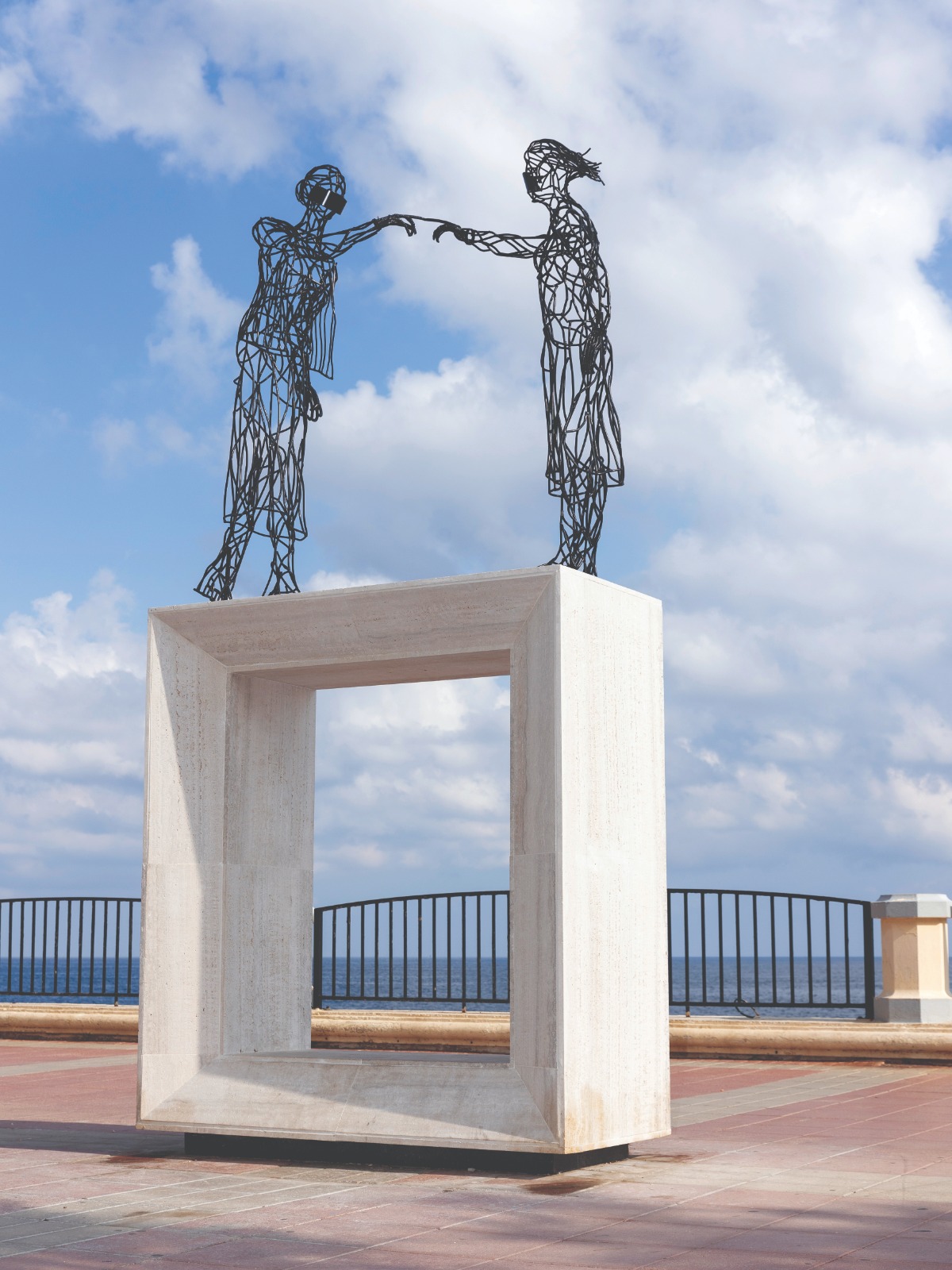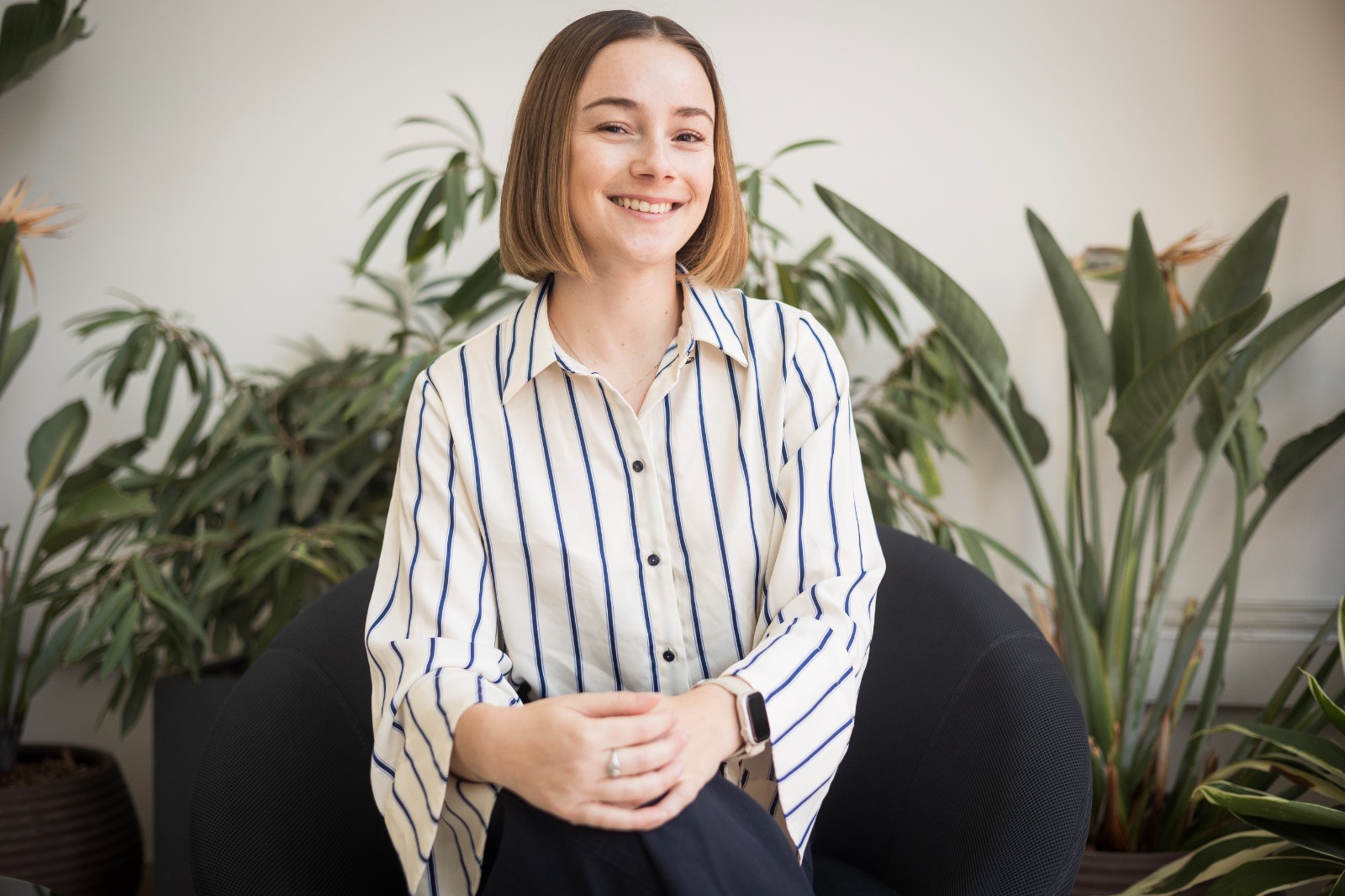As I’m shown around the veritable Aladdin’s cave that is Wallace Falzon’s studio, stepping over salvaged materials destined for use in future works and admiring piece after piece in an eclectic collection which take on several distinct forms – and tell different stories – I am surprised to learn that the artist’s journey into art only started in earnest some 10 years ago.
It’s a story that is representative of what beauty can stem from tragedy, and one that Wallace tells quietly and with humility.
“At 45 years old, I was diagnosed with a rare, chronic autoimmune condition that affects my nerves,” he begins, likening receiving the news to being hit by a train. At the time, he had a thriving business career, serving as company director within the local business sphere, but his diagnosis led him to reasses what he wanted out of life, and instilled a yearning to better express himself. The medium which would enable him to do this, he discovered, was art.
“I’m an introvert, but through art I found the medium to express myself. I began taking care of myself psychologically, through the expression of art, and realised I had enough of my business life,” he reveals, admitting, “working for the numbers becomes like an addiction that is difficult to get away from. If I had not fallen ill, I likely wouldn’t have considered making this radical change.”

Being completely self-taught, Wallace started with the medium of painting, before moving on to sculpture. For this reason, his collections are very eclectic, in that he doesn’t feel bound to any one style.
He started out humbly, painting on anything he could find – from gypsum boards to recycled paper. “From there, I made it my mission to start recycling everything, so the majority of artwork you see here utilises a variety of materials such as glass and recycled construction material like cement boards,” Wallace continues, admitting that while it’s much more labour intensive, and likely not viable for everyone, it makes it all the more satisfying. This extends to frames, which are often made of recycled pallet wood, he continues.

“I developed my own style from there. In this way, I use my lack of classical art training to my advantage – risk was part of my nature, and I feel comfortable with it, and now feel that anything can be developed into art,” he maintains, pointing out one piece, which, as its base, utilises an old street sign which had been trampled by cars.
As we continue our chat, he highlights another sculpture, Home is Where the Anchor Drops, explaining that the main material used in this piece is a complete salvaged chain and anchor from the sea. It also features a net, crafted out of welded construction nails.
Since starting out, Wallace has exhibited his work at four solo exhibitions and taken part in a few collectives. Throughout, his work has continued to be largely autobiographical, featuring subject matter related to current affairs, or specific situations which stick out to the artist. “Each piece tells a story – I don’t create art to make ‘pretty pictures’. Even when I’m in a good mood and choose to paint a landscape, for example, there’s always some emotional connection to it.”

Detailing his creative process, Wallace says that he starts every morning “with a feeling that I need to do something.” This could be a thought, and can often change as he embarks on the process, from when he starts working on it to the finished result. “I often don’t create a blueprint or design for a finished piece as it comes straight from my head, which can be tricky to convey in larger projects and structures, for which I need help to put heavier pieces together. My own perspective of the final product is very clear, but I can understand how it can be frustrating to others who are working with me,” he shares.

Inspiration, he says, can be found everywhere, and when he’s not feeling particularly inspired, he turns to self-portraits as an intriguing form of therapy. “When I feel I can’t work, I do a self-portrait and try to portray that mood. What’s interesting is that, once you portray that feeling and it’s down on the canvas, it’s externalised, and you’re released from it.”
His medical condition also plays a part in his artistic process, and today, he has learned to take it in his stride. “I receive treatment monthly, and utilise this time to reflect and further educate myself, so no time is wasted. My work also expresses the period at which it is created,” he explains, revealing that in the immediate period before he receives each treatment, his control over his right hand is limited as a result of his condition, and the work produced during that time is more expressive, with finer details being left for after the treatment. “It has become part of my schedule,” he smiles sagely.

Apart from exhibiting his work and receiving recognition from the local artistic community, Wallace considers being commissioned to work on his first public monument, commemorating the elderly who lost their lives during the COVID-19 pandemic, as an important milestone in his journey so far. Revealing the process and his thoughts behind the monument, which was unveiled in Sliema earlier this year, he says, “when I was approached by the Maltese Association of Gerontology and Geriatrics to create this monument, I immediately gave them my idea for it, and they were impressed enough to commission it. I wanted to do something contemporary but figurative, so as to appeal to both sides of the art community, and it took several months to construct. I did it all at cost price, because of the voluntary nature of the organisation, and was very pleased with the result.”

Imbuing a few words of advice to aspiring artists, Wallace details the importance of working on a daily basis. “If you’re a Sunday painter, you’ll never get out of your comfort zone. Artists have to be very honest when it comes to their work – if it does not reflect the true self, then you are just producing pretty pictures and it stops there. Art has to be an internal expression, with the freedom that you don’t care what people think about your work.”
As for what lies ahead for Wallace, well, he says, “the sky is the limit. If you work, opportunities will come. As long as I am able to operate, I will continue. The future is production, for as long as I feel fit.”
This interview was first carried in the Business Now winter 2022/2023 edition, the sister brand to BusinessNow.mt, both produced by Content House
Malta’s next leap: Secured
How ESET delivers enterprise-grade security to meet Malta’s digital ambitions
Mastering the language of business: How BELS is crafting bespoke training for a dynamic economy
BELS Malta Director of Studies Arianna Muscat on how the language school helps companies equip their teams for success.
Built differently – CLA Malta offers custom solutions in a cookie-cutter landscape of tax advisory and business
Their client-centric philosophy extends far beyond conventional consultancy.






